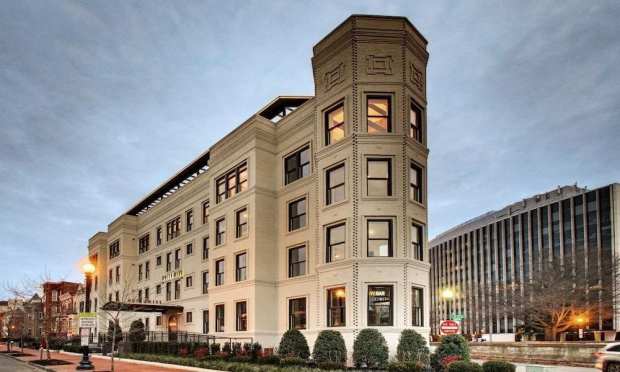Recreating The Hotel As A Social Hive

Microtels (a portmanteau of micro and hotel) are trendy today, but are not exactly a new concept. In many locations outside the U.S. small hotel rooms are the rule, not the exception, and even here in the states the idea has been floating around since 1989 when the Microtel brand began first offering its half-sized, half-priced hotel rooms in Rochester, New York. In that sense it might be hard to pick them out as innovative as first glance
However as is often the case with old things made new by retail needs, the microhotel deserves a second glance.
The micro lodging concept has aged and evolved pretty significantly since its earliest instantiation in the early days of the first Bush administration. Today the Microtel brand isn’t technically in the microhotel business — because its rooms are technically too large. But more importantly, the tones and tastes going into smaller-sized hotel rooms are also shifting, and dramatically. The microhotel of days of yore were focused exclusively on the hyper budget-conscious traveler and were more or less defined by the phrase “no frills.”
Today, the waves of microhotel chains, both independent and big brand-owned, are all about the frills — they just aren’t putting them in the rooms, which in general are less than 200 square feet. The rooms are smartly and chicly decorated as a rule — think tiny bathrooms tiled with marble, and hip furniture that doubles as a storage space. The public spaces, like the lobby, however, tend to be designed expansively and with a lot of purpose-driven use in mind. Hangout spaces around fireplaces, restaurants, cafes, bars and increasingly coworking spaces are becoming increasing standard microtel public space features.
“I really think the genesis of that is coming from millennials. And millennials are a very interesting group to watch. Because if the term ‘less is more’ ever really made sense, it is for this generation. And candidly, they’re right,” Jim Abdo told The Washington Post. Abdo’s firm, Abdo Development, built Washington, D.C.’s first microtel in 2016 — Hotel Hive.
Hotel Hive is housed in an early 20th century building famous for two things before being home to a new lodging concept in the nation’s capital. The first is its unusual wedge shape and hectagonal architecture in its main lobby. The second is that it was home to the Allen Lee Hotel prior to becoming Hotel Hive — an establishment that gained renown for just how truly bad it was.
“Worst Ever Hotel in the United States and Even in the Milky Way,” read the tagline on one online review, in a sentiment that was about par for the course at the old Allen Lee.
The new version comes with smaller rooms that its predecessor, though large by the standards of microhotels with a range of 125 to 250 square feet in its 83 rooms. They also start at a lower price point — though arguably not a low one — of $125 per night in a city where rooms typically range between $200 and $300.
The push, he notes, has also been to provide more in the way of service for guests, in the form of coworking spaces. The feedback they’ve heard most often in their first two years in operation has been from business travelers looking not just for places to stay while they are conducting business, but also better spaces in which to conduct business. Those service are set to roll out soon, likely in the fall of this year.
The question for microhotels, according to the experts, isn’t about whether they are popular today, since their proliferation across the landscape in various urban centers clearly indicates that they are. It is about whether they will remain popular, particularly in the face of an economic downturn that will come sooner or later.
Jan Freitag, senior vice president of lodging insights for STR, a hotel research firm, told The New York Times that the real test for the emerging lodging options will be when the economy “slows, unemployment rates increase, and corporate and leisure travel gets curtailed.”
But Mark Van Stekelenburg, managing director of CBRE Hotels Advisory, doesn’t think a slowdown really runs much risk of a shutdown, since microtels are less expensive for consumers to stay in and have better profit margins for their operators as they are often cheaper to maintain and can accommodate more paying customers.
“We will see continued efforts by independent and large hotel companies,” Van Stekelenburg said. “I believe they’re here to stay.”
